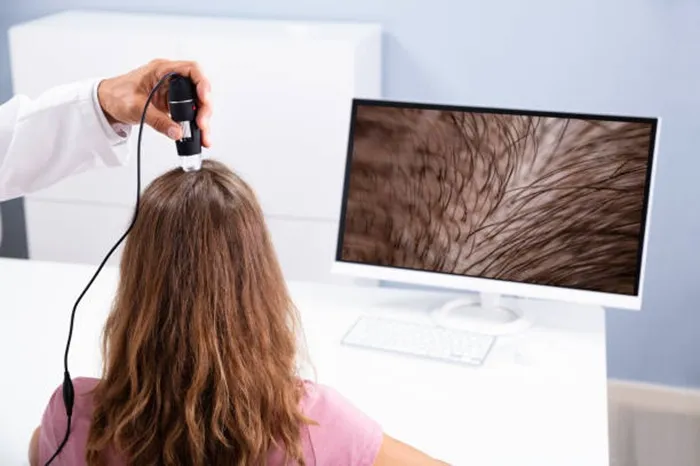Hair transplants are a popular and effective solution for hair loss, offering the promise of a fuller, natural-looking head of hair. However, like any surgical procedure, hair transplants come with potential risks and complications. Understanding what can go wrong with hair transplants is crucial for making an informed decision and ensuring the best possible outcome.
In this article, we will explore the potential risks, complications, and challenges associated with hair transplants, along with tips on how to minimize these risks. By the end of this article, you will have a clear understanding of the potential pitfalls and how to navigate them.
Understanding Hair Transplants
Hair transplants involve moving hair follicles from a donor area (usually the back or sides of the scalp) to a recipient area (the thinning or balding area). The two primary methods are Follicular Unit Transplantation (FUT) and Follicular Unit Extraction (FUE). While both methods are generally safe and effective, they are not without risks.
Potential Risks and Complications
Here are some of the potential risks and complications associated with hair transplants:
Infection
Description: Infections can occur at the donor or recipient sites, leading to redness, swelling, pain, and pus.
Causes: Poor hygiene during or after the procedure. Inadequate post-operative care.
Prevention: Follow your surgeon’s instructions for post-operative care. Keep the scalp clean and avoid touching the treated areas with dirty hands.
Treatment: Antibiotics prescribed by your surgeon.
Bleeding
Description: Some bleeding is normal during and immediately after the procedure, but excessive bleeding can be a concern.
Causes: Blood-thinning medications or supplements. High blood pressure.
Prevention: Inform your surgeon about any medications or supplements you are taking. Avoid alcohol and smoking before and after the procedure.
Treatment: Apply gentle pressure to the bleeding area. Contact your surgeon if bleeding persists.
Scarring
Description: Scarring can occur at the donor and recipient sites, especially with the FUT method.
Causes: The nature of the FUT procedure, which involves removing a strip of skin. Poor wound healing.
Prevention: Choose the FUE method if scarring is a concern. Follow post-operative care instructions to promote proper healing.
Treatment: Scar revision surgery or laser treatments for noticeable scars.
Poor Hair Growth
Description: The transplanted hair may not grow as expected, resulting in thin or patchy hair.
Causes: Poor graft handling. Inadequate blood supply to the transplanted follicles. Underlying medical conditions.
Prevention: Choose a skilled and experienced surgeon. Follow post-operative care instructions.
Treatment: Additional procedures or treatments may be needed.
Factors That Increase the Risk of Complications
Several factors can increase the risk of complications during and after a hair transplant:
Surgeon’s Experience
The skill and experience of the surgeon play a crucial role in the success of the procedure. Choosing an inexperienced surgeon increases the risk of complications.
Patient’s Health
Underlying health conditions, such as diabetes or immune disorders, can affect healing and increase the risk of complications.
Smoking and Alcohol
Smoking and excessive alcohol consumption can impair blood flow and delay healing.
Medications
Certain medications, such as blood thinners, can increase the risk of bleeding.
Post-Operative Care
Inadequate post-operative care can lead to infections, poor healing, and other complications.
How to Minimize the Risks
Here are some tips to minimize the risks associated with hair transplants:
Choose a Qualified Surgeon: Research and choose a board-certified surgeon with extensive experience in hair transplants.
Follow Pre-Operative Instructions: Follow your surgeon’s instructions regarding medications, smoking, and alcohol before the procedure.
Maintain Good Hygiene: Keep your scalp clean and follow post-operative care instructions to prevent infections.
Avoid Strenuous Activities: Refrain from heavy lifting, intense exercise, and activities that can increase blood pressure or cause sweating for at least a week after the procedure.
Attend Follow-Up Appointments: Regular follow-up appointments with your surgeon are essential to monitor your progress and address any concerns.
Communicate with Your Surgeon: Inform your surgeon about any unusual symptoms or concerns during the recovery process.
Conclusion
While hair transplants are generally safe and effective, they are not without risks. Understanding what can go wrong with hair transplants is crucial for making an informed decision and ensuring the best possible outcome. By choosing a qualified surgeon, following pre- and post-operative instructions, and being aware of potential complications, you can minimize the risks and achieve the desired results. If you have any concerns or questions about your hair transplant journey, don’t hesitate to reach out to your surgeon or a hair transplant specialist. They can provide personalized advice and support to help you navigate the process and achieve the best possible results.


